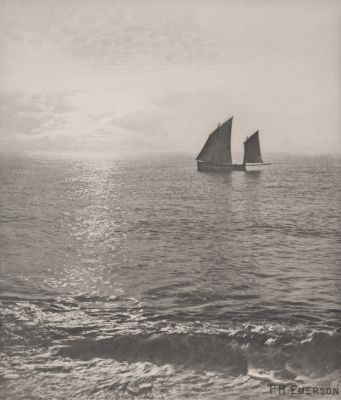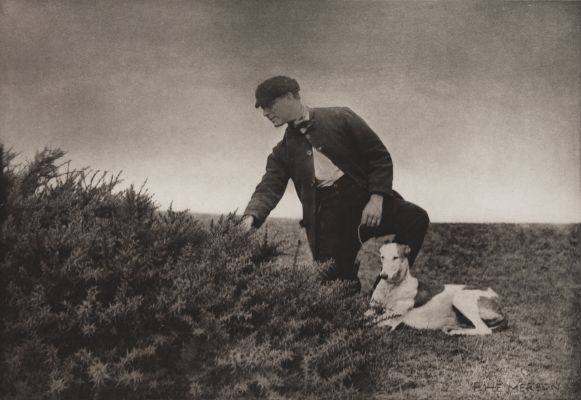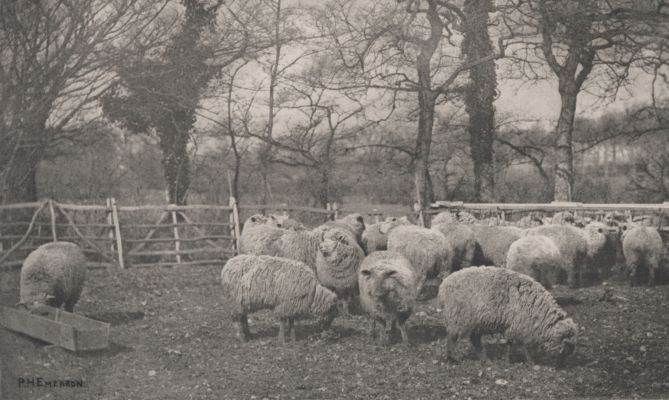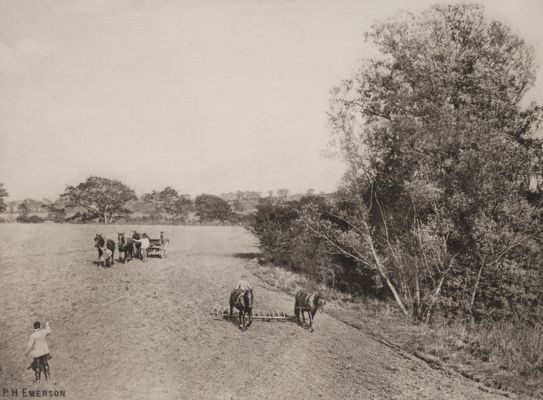
Title
The Faggot CuttersArtist
Emerson, Peter Henry (British, 1856-1936)Key FigurePublication
Pictures from Life in Field and FenDate
1888Process
PhotogravureAtelier
Walter L. Colls, LondonImage Size
9.8 x 12.1 cm
This photogravure is from Pictures from Life in Field and Fen, a portfolio of twenty ‘autogravure’ plates printed by The Autotype Company, with descriptive text and introduction by Emerson. The introduction specifies the plates were ‘unretouched’. A deluxe edition (gold-lettered cover and India plate paper) originally was advertised as limited to 150 copies, but only 100 were actually issued. An ordinary edition was originally advertised as limited to 600 copies, but only 100 were actually issued.
Peter Henry Emerson’s decade-long photographic work documented the people and landscape of the Norfolk Broads, a network of freshwater rivers, lakes, and marshes in East Anglia, on England’s eastern shore. Drawn to rural subjects, Emerson was fascinated by the region’s traditional ways of life and concerned that they were threatened by industrialization and tourism. Originally introduced to photography on bird-watching trips, Emerson’s work reflects the influence of the Realist school of painting, incorporating a photographic and specifically English sensibility into their artistic celebration of peasant lifestyles. Emerson was an early proponent of straight photography as an art form, eschewing both the undiscriminating emphasis of sharp focus rendering and the romantic vagueness of soft focus. Emerson’s subjective approach was enhanced by the ‘ambiance’ of selective focus which aimed to replicate the experience of the human eye’s encounter with the world. His vocal advocacy of this ‘truthful’ photography saw him rise to a position of considerable and controversial influence within the contemporary photography establishment. His influential 1889 book Naturalistic Photography for Students of the Art outlined his thesis that photography’s ability to record nature truthfully was its most expressive one. He argued that the photograph should imitate nature rather than alter it.
His first album of photographs, published in 1886, was entitled Life and Landscape on the Norfolk Broads, and it consisted of 40 platinum prints that were informed by these ideas. Experiencing difficulty with accurately recreating the depth and atmosphere which he saw as necessary to capture nature with precision, Emerson adopted photogravure for his second portfolio, Pictures from Life in Field and Fen. He published six further books of his photography through the next ten years – all in photogravure. In the last two of these volumes, On English Lagoons (1893) and Marsh Leaves (1895), Emerson printed the photogravures himself. After the publication of Marsh Leaves in 1895, generally considered to be his best work, Emerson ceased publishing.
References
Newhall, Nancy. P. H. Emerson: The Fight for Photography As a Fine Art. New York: Aperture, 1976. p. 189.
Carl Fuldner, ‘Emerson’s Evolution’, Tate Papers, no.27, Spring 2017, http://www.tate.org.uk/research/publications/tate-papers/27/emersons-evolution, accessed 26 July 2017.
Taylor J. The Old Order and the New : P.H. Emerson and Photography 1885-1895. Munich: Prestel; 2006.








